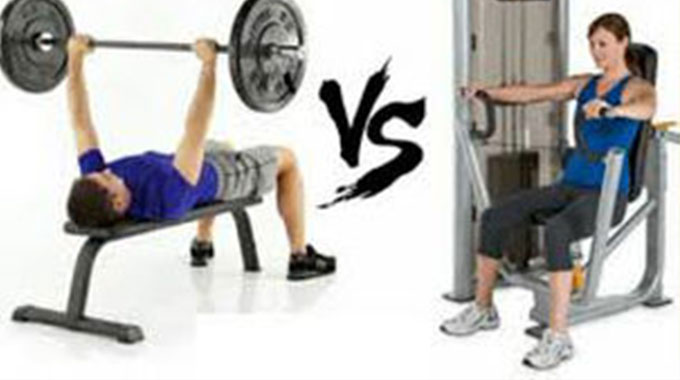
The Sunday News

Simon Gama
Free weights provide a more complete workout. However, they also require more expertise in their use. When lifting free weights like dumbbells and barbells, not only is the prime mover or agonist being worked but all muscles responsible for stabilising the joint.
The result is to increase the strength of the stabiliser muscles. Greater care is required when using free weights. Improper technique can result in injury to the user or bystander if the weights are dropped.
It is important to remember to enlist aid of a spotter whenever free weights are raised over the head. A spotter’s responsibility is to ensure the safety of the user during the execution of the exercise. The spotter must observe the condition of the user and try to anticipate exhaustion.
The spotter must also ensure that balance and an even lift is executed, that proper breathing technique is adhered to and that proper form is being executed by the user. A spotter’s strength is not important as his or her vigilance.
Machines provide a safer workout than free weights. Machines also specifically target a particular muscle automatically. It’s harder to cheat during an exercise by incorporating unintentional muscle groups. However, lateral movement is generally restricted, machines do not provide as complete a workout.
When lifting an overhead with machines, a spotter is not necessary since the weights are confined to a rack and not directly overhead. Some machines are not adjustable for height or length of limbs on an individual basis. This can cause poor fit and even undue stress on joints when the supporting pressure incorrectly applied.
The Biceps Curl and Triceps Concentration machines in many gyms are not adjustable and may cause undue stress on elbow joints instead of applying pressure to the back of the upper arm along the triceps.
In summary free weights provide the best workout when a spotter is available and proper lifting technique is executed. In contrast, machines provide a better workout than could be safely achieved using free weights when a spotter is not available.
Proper lifting technique
The technique incorporated in lifting weights is the most part of weight training. Improper technique can be responsible for everything from unintentionally exercising the wrong set of muscles to an injury requiring surgery and possible years of recovery. Tears can occur in muscles, tendons, and ligaments. Joints can be damaged with possible chronic implications.
Technique can be learnt from reading exercise magazines or books specifically geared to weight room technique. However, in most cases, a few initial trips to the proper exercise with respect to your goals and instruct you on proper technique will do. Starting a workout programme without a trainer is like going to a school without a teacher.
The following guidelines should be followed when lifting weights. Lift weights from the flow with legs and not your back; Use a smooth range of motion; Don’t jerk the weight; -Don’t lock the knees (keep them slightly bent); Don’t put pressure on the teeth (the enamel might crack); keep back alignment, don’t hyper extend or flex back; Don’t chat with your buddy, concentrate on the task; Unoxygenated muscles can cramp, breathe on exertion; Sets and reps; A repetition is referred to as a rep and is a single lift of the weights. A group of reps are called a set.
An exercise is generally composed of 3 to 4 sets. The amounts of weights used is dependent on the goal of the participant and the fitness level. If the goal is to build muscles at the fastest rate then 6 to 8 Reps should be done with heavier weights. If the goal is to simply tone or maintain the existing muscle strength then 12 to 16 Reps should be done with a lighter weight.
Participants should never use the heavy weight category if they have not lifted before or if significant amount of time has passed since they have last trained. When initially beginning a training programme it is recommended to use the light category for at least 3 to 4 weeks before progressing to the medium weight level.



